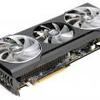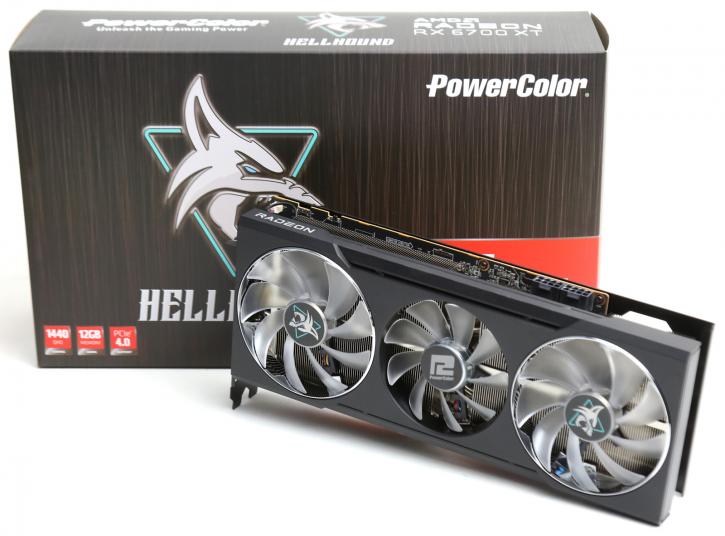Introduction
PowerColor Radeon RX 6700 XT HELLHOUND review
We're going back to the dark side, as PowerColor introduced a Radeon RX 6700 XT with demonic naming, meet the Hellhound edition. A product that stays at reference performance is intended to be a more valuable proposition. Things look good for this product series. Armed with a triple-fan cooler and a customized design, TUL (the company behind PowerColor) delivers a reference clocked product with the ability to tweak it yourself. However, being a non-OC SKU, that does envoke more restrictions. The base power allowance is lower, and the card has a restriction on maximum Boost frequency as well as graphics memory. Armed with 12GB of graphics memory, will it be enough? In this review, we start off with of overview and analysis, we'll be discussing the Radeon Series 6700 XT from AMD that stems from the RDNA2 architecture. It certainly took a while for AMD to release it; back in July 2019 AMD announced the NAVI-based Radeon RX 5700 and 5700 XT. a product series that ever since has been well respected. The 5700 series does offer some good performance. However from there onwards, things were pushed back for various reasons like all COVID-19 related, in the world of graphics technology, also a new dynamic was added, Raytracing. Or, I should say DirectX Raytracing (DX-R). NVIDIA was pioneering two years ago with their RTX 2000 series already, and AMD made the call to delay that for the original Navi GPU. As the graphics landscape changed somewhere done the line, so this the roadmap for AMD change. Microsoft and Sony consoles embedded with AMD technology revealed that Ray tracing was going to be supported. And that did set the trend for the desktop graphics card we see announced today as well.
Radeon RX 6700 XT
AMD announced the card at their 'Where Gaming Begins epi3' presentation (March 3, 2021). As earlier indicated, only one NAVI22 SKU is released at this time. The Radeon RX 6700 XT. A Non-XT version may follow at a later date. The RX 6700 XT will be commercially available starting on the 18th of March 2021. Reference cards and customs cards launch on the same date. Navi22 XL, the GPU that resides on the 6700 XT graphics card series has been paired with 12 GB of GDDR6 graphics memory Armed with RDNA2 architecture and 40 CUs this offers 2560 shading processors, the same amount as the Radeon RX 5700 XT, the architecture, however, is much faster. The memory makes use of a 192-bit wide memory bus. The reference boards use 11 phases of power. It will have a base clock of 2321 MHz, a game clock of 2424 MHz, and a boost clock of 2581 MHz. The graphics card features 160 TMUs, 64 ROPs, and 40 Raytracing cores for raytracing hardware acceleration. The graphics card is equipped with a high-quality PCB with an 8-pin and 6-pin power connector. The official TDP is listed at 230W.
| Desktop | ||||||||
| GPU | Stream Processors | RT Cores | Max Boost GPU clock (MHz) | RAM type | RAM volume (GB) | RAM bandwidth (GB/s) | RAM width | TDP (watts) |
| Radeon RX 6900 XT | 5120 | 80 | 2250 | GDDR6 | 16 | 512 | 256-bit | 300 |
| Radeon RX 6800 XT | 4608 | 72 | 2250 | GDDR6 | 16 | 512 | 256-bit | 300 |
| Radeon RX 6800 | 3840 | 60 | 2105 | GDDR6 | 16 | 512 | 256-bit | 250 |
| 6700 XT XFX M319 | 2560 | 40 | 2622 | GDDR6 | 12 | 384 | 192-bit | 230 |
| 6700 XT MSI GX | 2560 | 40 | 2622 | GDDR6 | 12 | 384 | 192-bit | 230 |
| 6700 XT HellHound | 2560 | 40 | 2581 | gddr6 | 12 | 384 | 192-bit | 230 |
| Radeon RX 6700 XT | 2560 | 40 | 2581 | GDDR6 | 12 | 384 | 192-bit | 230 |
| Radeon RX 5700 XT | 2560 | 1605 | GDDR6 | 8 | 448 | 256-bit | 225 | |
| Radeon RX 5700 | 2304 | 1465 | GDDR6 | 8 | 448 | 256-bit | 180 | |
| Radeon VII | 3840 | 1400 | HBM2 | 16 | 1024 | 4096-bit | 300 | |
| Radeon RX Vega 64 | 4096 | 1247 | HBM2 | 8 | 484 | 2048-bit | 295 | |
| Radeon RX Vega 56 | 3584 | 1156 | HBM2 | 8 | 410 | 2048-bit | 210 | |
| Radeon RX 590 | 2304 | 1469 | GDDR5 | 8GB | 256 | 256-bit | 185 |
All 6000 cards released by AMD and their board partners will be fitted with GDDR6 memory, the 6700 XT however sees 12 GB of it. And that means a more bandwidth-limited 192-bit wide memory bus. However, AMD has got that trick up their sleeves architecture-wise, as they added an L3 cache into the GPU. All RDNA2 based graphics processors are DirectX Ultimate compatible, a naming placeholder for extra feature levels such as DirectX Raytracing (DXR), Variable Rate Shading (VRS), Mesh Shaders, and Sampler Feedback.
Pricing
The Radeon RX 6700 XT reference is to cost a rather excessive 479 USD. Thus, you can expect board partner cards with custom designs and cooling to sit above the 500 USD marker. At the time of writing, we just cannot make any sense of price levels as where NVIDIA increases pricing, AMD now follows suit. Unfortunately, prices are now at such ridiculous levels that people will flee to consoles far more easily. Traditionally the Radeon RX x700 Series should have been mainstream to high-end product. Coming from the last-gen 5700 XT, AMD increased pricing by 80 USD. TUL (Powercolor) would not confirm an MSRP for this product.
PowerColor Radeon RX 6700 XT HELLHOUND Series
PowerColor brings a new product line to the market with again a rather dark naming, HELLHOUND. Hellhounds' mythology indicates a hellhound is a supernatural dog in folklore. A wide variety of ominous or hellish supernatural dogs occur in mythologies around the world. Features that have been attributed to hellhounds include mangled black fur, glowing red eyes, super strength and speed, ghostly or phantom characteristics, and a foul odor. Certain European legends state that if someone stares into a hellhound's eyes three times or more, that person will surely die. In cultures that associate the afterlife with fire, hellhounds may have fire-based abilities and appearance. Well, a name that has been chosen wisely? Next to the Hellhound series TUL (the company behind PowerColor) will offer Liquid Devil, Red Devil, and Red Dragon products. Hellhound looks a bit different with a black and blue color scheme as it is a bit more normal. The product has a backplate that features the logo of the new series. And despite the reference clocks, the card reveals a duo of 8-pin power connectors and three DisplayPort 1.4a, and a single HDMI 2.1. It is based on a triple-fan cooler and a 2.5-slot design. The modified RX 6700 XT graphics card has an outspoken black design with a backplate. The three fans emit blue light (that one color only), you'll spot a switch at the top side, no that's not dual BIOS, but you can turn on/off the blue LED light with it. In the I/O area, the card includes three DisplayPort 1.4 ports, one HDMI 2.1. Clock frequencies are reference, so is the power distribution, and the 12GB GDDR6 memory clocks in at 2000 MHz (16 Gbps effective). The card has a length of close to 31cm. On the next two pages, some in-house photos, after which we then head onwards into the review.


